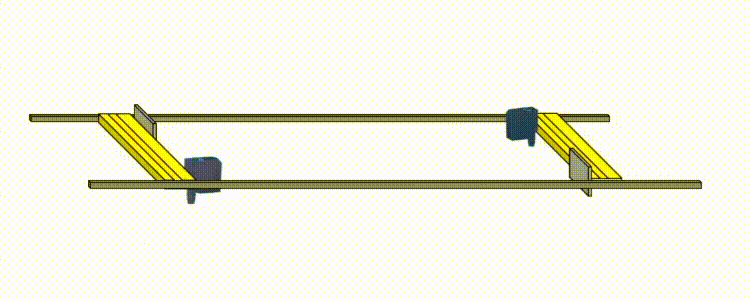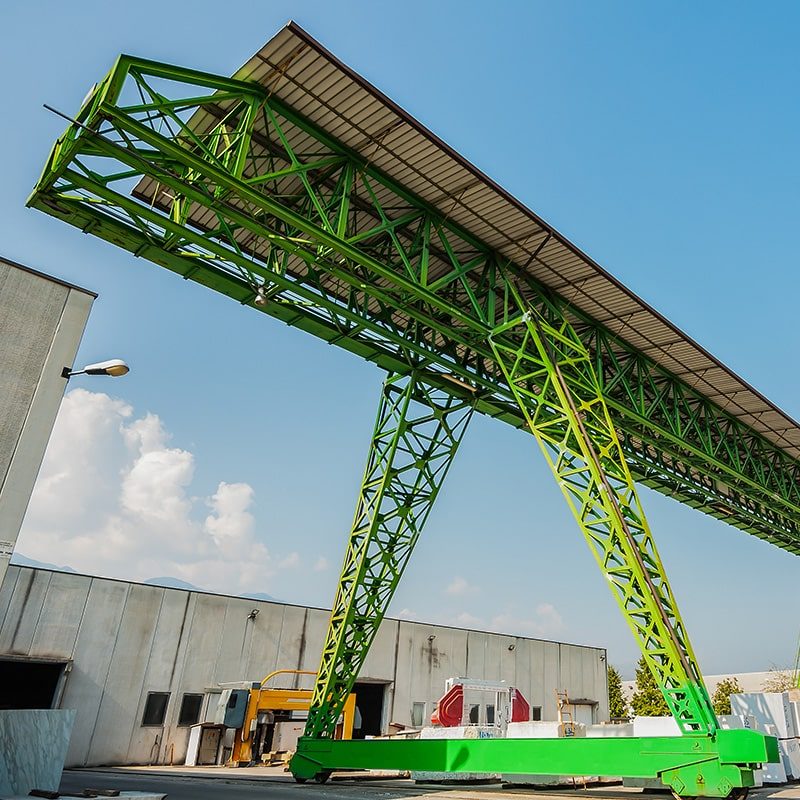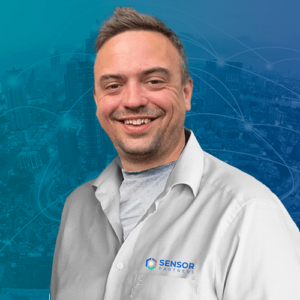Overhead cranes are used for lifting and moving around heavy materials or objects in a warehouse or factory. To make this operation run without problems the overhead crane needs information about the environment. There is a number of situations in which an automated system, like a sensor, can provide a solution with the right functionalities.
In this article we dive deeper into the functionalities of sensors that have a crucial role in applications with overhead cranes. To be more specific: it's about laser sensors. In addition we will showcase a number of fitting sensors with pros and cons to help you in making the right choice.
Tandem function: overhead cranes move synchronised
Safety and control are of utmost importance in an application in which multiple girders have to operate (synchronically) on the same track of the crane. In the event of one of the girders moving in an incorrect position, the center of gravity of the load is deviated. Another risk among these crane girders is a collision as a result of an error in the control system.
The solution for such an application is sensors with a tandem function. This functionality ensures that the two overhead cranes constantly detect each other's relative position by means of sensors and move forward based on this. The sensors use the Time Of Flight principle (TOF). A signal is sent from the sensor to a reflector or a receiver. The distance can be determined by the sensor based on the time difference between the transmitted and received signal. When a desired distance (within the max. range of the sensor) is configured, the sensors ensure that this distance is maintained between the two cranes.

Anti collision function: prevent collisions of overhead cranes

Another important functionality that provides a solution in the automation of overhead cranes is the anti-collision function. The sensors that support this function provide an adaptive movement speed of the crane towards an obstacle. This could be another crane or a wall, for example.
Sensors with an anti collision function also make use of the TOF principle (Time Of Flight) to determine a distance. However, this function is used to decrease the movement speed in contrast to the aforementioned tandem function that synchronizes it. The speed with which the crane moves is slowed down gradually. This way a desired speed can be set in order to define a movement speed per distance to an obstacle. This ensures that an overhead crane moves at a normal working speed in the first ten meters to an obstacle and half the speed in the second five meters. By the constant calculation of the distance by sent and received signals the sensor can determine when the movement speed has to be adjusted. The smaller the distance, the more the speed decelerates with gradual transitions until a complete stationary position.
What is the best solution for you?
Below here you can find a description of a selection of highlighted sensors that excel in applications with overhead cranes. The mentioned sensors can be used for the tandem function as well as the anti collision function. However, the LAM 5.21 is the only sensor that contains these functions as a built-in and preprogrammed feature. The other two options require a configuration through a PLC, for example (Programmable Logic Controller). Based on this you can make an educated selection for the sensor that suits your preferences and the demands if your application. If it’s still a hard choice to make, then one of our experts is ready to help you with it. Please contact us!






